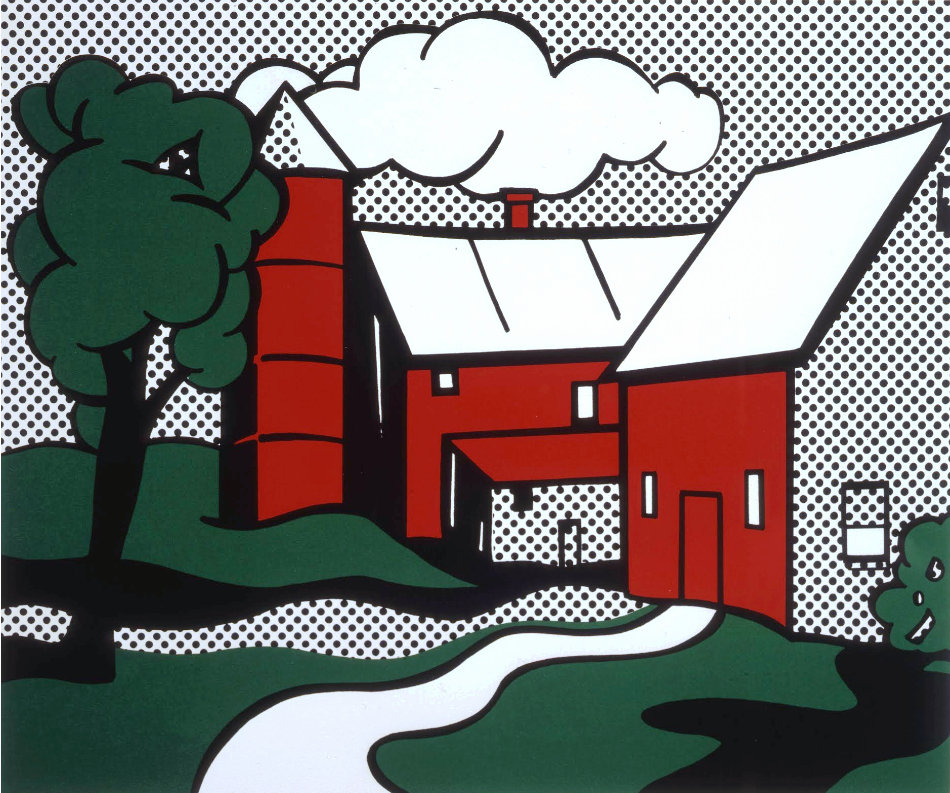Pop art 1950 – 1970


International movement in painting, sculpture and printmaking The term originated in the mid-1950s at the ICA, London, in the discussions held by the Independent Group concerning the artefacts of popular culture This small group included the artists Richard Hamilton and Eduardo Paolozzi as well as architects and critics Lawrence Alloway (1926–1990), the critic who first used the term in print in 1958, conceived of Pop art as the lower end of a popular-art to fine-art continuum, encompassing such forms as advertising, science-fiction illustration and automobile styling Hamilton defined Pop in 1957 as: ‘Popular (designed for a mass audience); Transient (short term solution); Expendable (easily forgotten); Low Cost; Mass Produced; Young (aimed at Youth); Witty; Sexy; Gimmicky; Glamorous; and Big Business’ Hamilton set out, in paintings such as $he (1958–61; London, Tate), to explore the hidden connotations of imagery taken directly from advertising and popular culture, making reference in the same work to pin-ups and domestic appliances as a means of commenting on the covert eroticism of much advertising presentation
Pop art is an art movement that emerged in the mid-1950s in Britain and the late 1950s in the United States The movement presented a challenge to traditions of fine art by including imagery from popular and mass culture, such as advertising, comic books and mundane cultural objects One of its aims is to use images of popular (as opposed to elitist) culture in art, emphasizing the banal or kitschy elements of any culture, most often through the use of irony It is also associated with the artists’ use of mechanical means of reproduction or rendering techniques In pop art, material is sometimes visually removed from its known context, isolated, and/or combined with unrelated material
Among the early artists that shaped the pop art movement were Eduardo Paolozzi and Richard Hamilton in Britain, and Larry Rivers, Robert Rauschenberg and Jasper Johns among others in the United States Pop art is widely interpreted as a reaction to the then-dominant ideas of abstract expressionism, as well as an expansion of those ideas Due to its utilization of found objects and images, it is similar to Dada Pop art and minimalism are considered to be art movements that precede postmodern art, or are some of the earliest examples of postmodern art themselves
Pop art often takes imagery that is currently in use in advertising Product labeling and logos figure prominently in the imagery chosen by pop artists, seen in the labels of Campbell’s Soup Cans, by Andy Warhol Even the labeling on the outside of a shipping box containing food items for retail has been used as subject matter in pop art
The origins of pop art in North America developed differently from Great Britain In the United States, pop art was a response by artists; it marked a return to hard-edged composition and representational art They used impersonal, mundane reality, irony, and parody to “defuse” the personal symbolism and “painterly looseness” of abstract expressionism In the US, some artwork by Larry Rivers, Alex Katz and Man Ray anticipated pop art
By contrast, the origins of pop art in post-War Britain, while employing irony and parody, were more academic Britain focused on the dynamic and paradoxical imagery of American pop culture as powerful, manipulative symbolic devices that were affecting whole patterns of life, while simultaneously improving the prosperity of a society Early pop art in Britain was a matter of ideas fueled by American popular culture when viewed from afar Similarly, pop art was both an extension and a repudiation of Dadaism While pop art and Dadaism explored some of the same subjects, pop art replaced the destructive, satirical, and anarchic impulses of the Dada movement with a detached affirmation of the artifacts of mass culture Among those artists in Europe seen as producing work leading up to pop art are: Pablo Picasso, Marcel Duchamp, and Kurt Schwitters